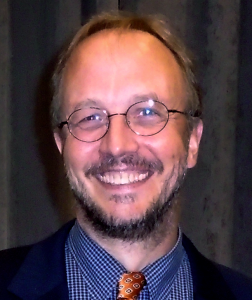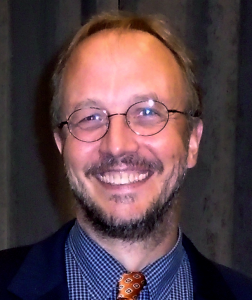The library has introduced a new speaker series in “Non-traditional Career Opportunities for Students in Humanities and Social Sciences” this semester. Organized by Bohyun Kim, Scholarly Technology Librarian, this series aims to help students of all levels explore working in fields that are not necessarily directly associated with the Humanities or Social Sciences.
 The first session was Thursday, Feb. 22 with Assistant Professor Karl Aspelund of the Textiles, Fashion Merchandising and Design Department, with three more sessions to come. I attended this first session and thought that Dr. Aspelund’s talk was very interesting and the whole speaker-series project seems extremely pertinent to the current humanities job market.
The first session was Thursday, Feb. 22 with Assistant Professor Karl Aspelund of the Textiles, Fashion Merchandising and Design Department, with three more sessions to come. I attended this first session and thought that Dr. Aspelund’s talk was very interesting and the whole speaker-series project seems extremely pertinent to the current humanities job market.
I have been very aware throughout my graduate career that the traditional tenure-track academic job is becoming increasingly difficult to pin down for recent graduates. This not only has to do with the number of highly-qualified candidates on the market every year, but also a move towards hiring more adjunct faculty compared to the past. I am not interested in bemoaning this situation or suggesting that people shouldn’t strive for tenure-track jobs, but I am interested in seeing what else is out there before I commit to 14 years as an adjunct professor (Dr. Aspelund did just that at one point, but more about his story later). I have also been lucky enough to find myself in a department that is not only aware of possibilities for careers outside of universities, but one actively researching what these positions might be and how best to prepare us for working both in and outside academia. In 2016-2017, Dr. Kathleen Davis successfully wrote a grant funded by the National Endowment for the Humanities as part of the Next-Gen PhD initiative which helps our department and university very seriously explore and expand career preparations for English Graduate students. Bohyun Kim’s speaker series thus seemed like a natural extension of that work, and yet another chance to meet more people and hear their perspectives.
Dr. Aspelund wouldn’t necessarily suggest you follow his“career” path, yet he still came to share some interesting advice based on some thoroughly unconventional experiences. While growing up in Iceland, he initially planned to study physics at university, but rather accidentally became involved in theatre arts and set and costume design. He became so immersed in theater arts that not only was he working professionally while still in university, but also chose to take an art school admissions exam instead of pursuing physics. After several years of working in theatre, he entered a new experience as a professor of costume design—a position he found only after flipping through TV channel advertisements! After that, however, the circumstances of his life brought him to Rhode Island where he eventually began working as an adjunct professor for URI. Since he was without an advanced degree and could not move past adjuncting, he needed more work to round out his income. Thus, he began working in gallery installations and eventually as a designer for an artist who needed to model pieces with computer-aided design and drafting software. After some convincing from other professors in the Textiles, Fashion Merchandising, and Design department, Aspelund returned to school to complete a PhD in Anthropology, thus allowing him to work full-time at URI. That work, however, hasn’t stopped him from finding new projects. Most recently, he became part of the team for the 100 Year Starship, bringing a focus on outfit design and an emphasis on the “human element” to the group’s planning sessions. He, for instance, suggested a goal of the starship be to send poets into space alongside the engineers and astrophysicists for the sake of their creative thinking and artistic perspectives. This path does seem indirect and forking, but he made sure to point out that his interests (such as that initial interest in physics) followed him throughout life. He has been able to find demonstrable ways in which to combine such casual interests with academics, hence the design work on an interstellar space mission.
Maybe that sort of “career” wouldn’t suit everyone, but Dr. Aspelund has distilled a few great lessons from how his life has gone so far. The one that resonated with me was his attitude of “I can do that.” Even when he did not have the exact training or qualifications for a position, if he felt capable of fulfilling the duties, he did not hesitate to put himself up for the position. As long as you are honest with yourself about what you can do, and often what you enjoy doing, the words on your degree aren’t as significant. He compared it to dancing, “If you know the steps, you say yes.” To take advantage of these randomly discovered opportunities, one has to be prepared and considerably adaptable. This might be having an open mind to professions you had never considered, or working to improve on skills that you think might be really important for something that sounds fun. Once you are prepared for chances though, you shouldn’t always just wait for them to come to you. Sometimes reaching out, and ignoring the “standard channels,” will help that opportunity present itself sooner. Finally, specifically to working across disciplines, if you can become involved in a conversation with people from different fields, often you’ll find that you do have something to teach them, like how will the astronauts do laundry?
If you’re interested in attending on the of future talks, you can find more information and register here.

